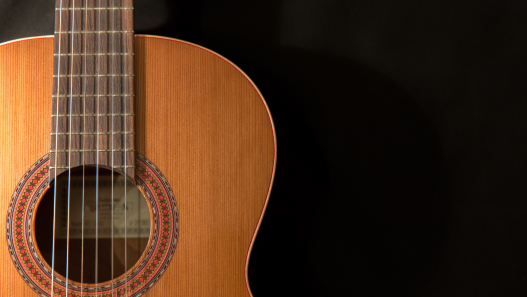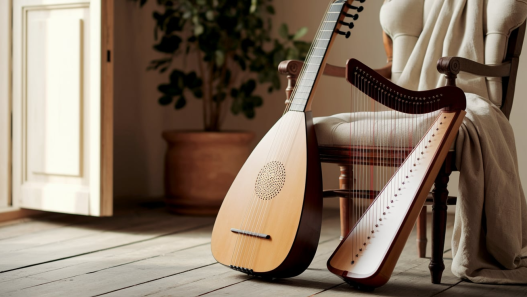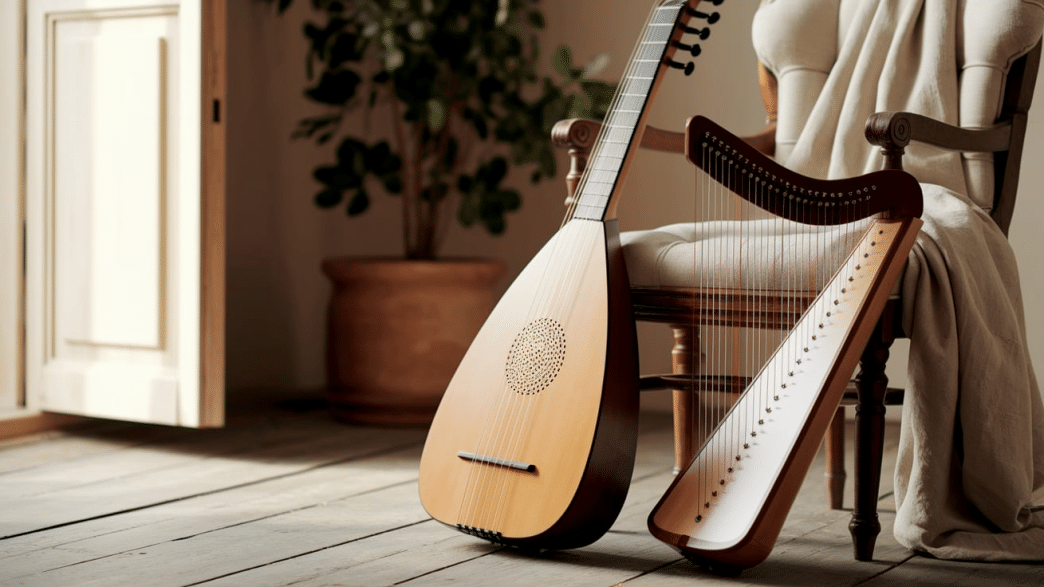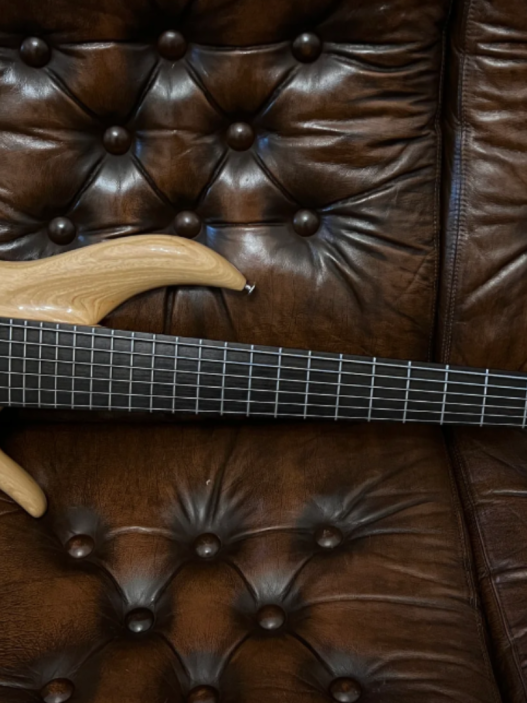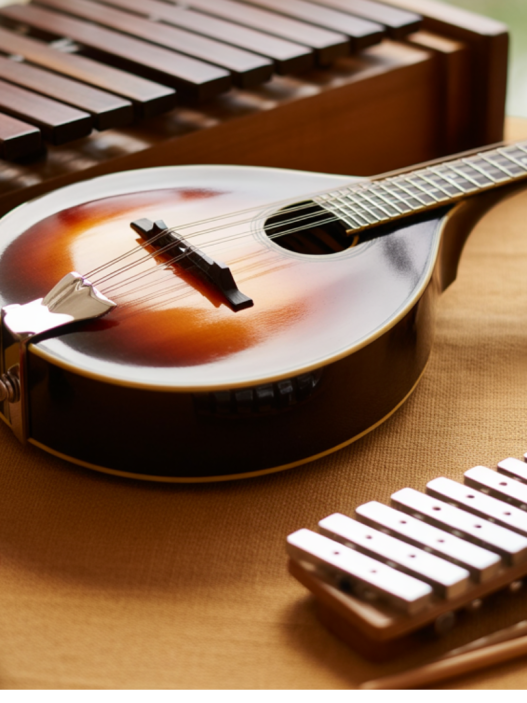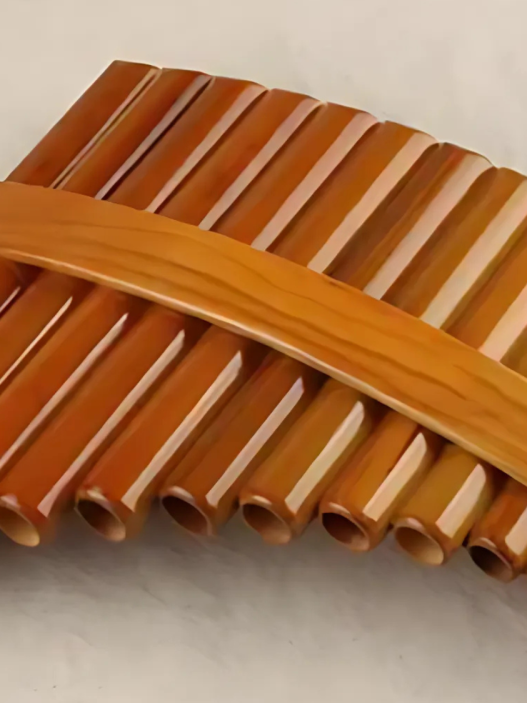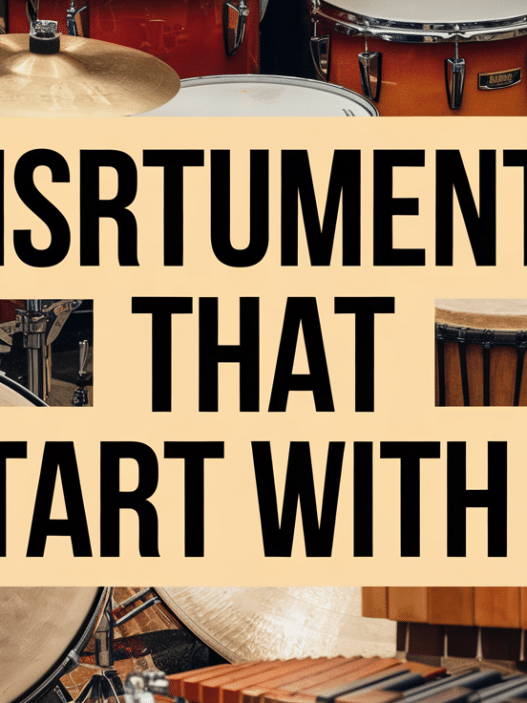Someone walks into a music store and gets completely lost among all the instruments hanging on the walls. Then their eyes land on a beautiful lute sitting quietly in the corner.
The letter L brings us some pretty cool musical instruments that many people overlook. From the gentle strum of a lyre to the deep boom of large drums, these instruments have stories worth hearing.
Some folks think they need to stick with popular choices like guitars or pianos. But L instruments offer something special – they connect us to different cultures and sounds that can add new colors to any musical journey.
This list covers instruments that start with the letter L, ranging from the well-known to the wonderfully unusual. Each one has its personality and place in the world of music.
Why Learn About Instruments by Alphabet?
Exploring musical instruments by alphabet is a fun way to dive into music history and discover how different cultures create sound.
Themed lists like these make it easier to learn about instrument families, from stringed wonders to unique percussion pieces.
Educators and parents can use these A–Z collections as engaging lesson starters, trivia games, or creative writing prompts for kids.
It’s a playful approach to introduce children to instruments they might never see in everyday life.
For budding musicians, discovering unusual instruments and sounds, such as the kora or khene, can spark a fresh curiosity and encourage them to experiment with music in new ways.
An alphabetical journey makes exploring music both educational and entertaining!
Popular Musical Instruments That Start With L
Explore well-known musical instruments starting with L. These are beloved in various music genres and cultures worldwide.
1. Lute

The lute originated in the Middle East and became popular in Medieval and Renaissance Europe.
Its gentle, plucked strings make it ideal for classical and early music. Today, it’s often heard in historical music performances and folk festivals.
Fun Fact: The word “lute” comes from the Arabic “al-ʿūd.”
2. Lyre

This ancient Greek string instrument was used to accompany poetry and storytelling. Its distinctive U-shaped frame and plucked strings symbolize classical antiquity. Modern versions can be found in folk and Celtic music scenes.
Fun Fact: Apollo, the Greek god, is often depicted with a lyre.
3. Lap Harp

A small, easy-to-play harp that rests on the player’s lap. Known for its soothing sound, it’s popular among beginners and folk musicians. Often played at small gatherings, folk circles, or for personal relaxation.
Fun Fact: Many lap harps come with song sheets to slide under the strings.
4. Lap Steel Guitar

Emerging from Hawaiian music, this guitar is played horizontally on the lap. Its slide technique produces smooth, gliding notes loved in country and blues. It’s a staple in bluegrass bands and Hawaiian music ensembles.
Fun Fact: The lap steel paved the way for the pedal steel guitar used in country music.
Rare & Unique L-Instruments You Should Know
Meet the hidden gems of the music world: rare instruments that start with the letter L, each holding unique cultural and historical value.
5. Laúd

A Spanish folk lute, part of the bandurria family, traditionally used in Spanish folk and rondalla groups.
It has a pear-shaped body and multiple strings producing bright, lively tones. Still cherished in Spanish and Filipino folk ensembles today.
Fun Fact: The Laúd is prominent in Filipino harana serenades.
6. Lira da Braccio

A bowed string instrument from Italy resembling an early violin. It was favored by poet-musicians and court performers for its expressive range. Rare today but revived by historical performance artists.
Fun Fact: Leonardo da Vinci was said to have played the Lira da Braccio.
7. Lur

An ancient Scandinavian horn made of bronze or wood, used in ceremonies and rituals. Its long, curved design produces a powerful, haunting sound. Modern reconstructions are played at historical reenactments and folk festivals.
Fun Fact: Many Lurs have been found buried in bogs across Denmark.
Wind & Percussion L-Instruments
Not just strings! Here are some intriguing wind and percussion instruments starting with L, each adding unique textures to music.
8. Lion’s Roar

A friction drum that produces a deep, growling sound reminiscent of a lion’s roar. It’s used in orchestral music and theatrical sound effects for dramatic scenes. Its roar is created by pulling a resined cord through the drum skin.
Fun Fact: It’s popular in experimental and avant-garde compositions.
9. Lithophone

A percussion instrument made from resonant stones struck to produce musical notes. Found in ancient cultures and revived in modern sound installations and ambient music. Each stone is carefully tuned for melodic or percussive effects.
Fun Fact: Some lithophones date back over 4,000 years.
10. Long Drum

A tall, cylindrical drum traditionally used in African and Caribbean music. It’s hand-played and produces deep, resonant bass tones perfect for ceremonial rhythms and dance accompaniments. Still popular in folk ensembles and drum circles.
Fun Fact: Some cultures carve them from a single hollowed log.
11. Lakota Flute

A wooden end-blown flute used by the Native American Lakota tribes and known for its soft, haunting melodies in spiritual and storytelling contexts. Today, it’s widely used in world music and Native American fusion genres.
Fun Fact: Traditionally made from cedar or elderberry wood.
12. Langspil

An Icelandic monochord zither is played with a bow or plucked. Once common among Icelandic farmers for folk tunes and storytelling. Revived today by musicians exploring Nordic heritage music.
Fun Fact: The word “Langspil” means “long play.”
13. Leiqin

Another rare Chinese string instrument, similar to a banjo with a snakeskin-covered soundbox. Common in traditional ensembles and Chinese opera. Its twangy tone adds sharp rhythmic accents.
Fun Fact: The body is often decorated with intricate carvings.
14. Lakota Courting Flute

A variation of the Lakota flute, historically used by young men for courtship songs. Produces romantic, expressive melodies in love ballads and traditional ceremonies. Now featured in Native American new-age music.
Fun Fact: Each flute was custom-made and tuned by the player.
15. Lavta

A Turkish plucked string instrument related to the oud. Popular in Ottoman classical and folk music for its delicate, nuanced tone. Played solo or in small ensembles.
Fun Fact: Frets are tied and adjustable for microtonal tuning.
16. Litungu

A traditional lyre from Kenya, made of wood and animal hide. Used by the Luhya people for storytelling, dances, and rituals. Its gentle, harp-like tone supports singing and poetic recitations.
Fun Fact: Played with both thumbs, plucking the strings.
How to Learn or Play L-Instruments
Exploring new instruments can be both exciting and rewarding, no matter your skill level. Whether you’re drawn to ancient sounds or modern versions, starting is easier than you think.
- Start with familiar versions: Try beginner-friendly versions like a ukulele before moving to a lute.
- Use online tutorials: Platforms like YouTube and music learning apps offer free lessons for lyre or lap harp basics.
- Join local or online groups: Connect with folk music clubs or online forums for tips on playing unique instruments.
- Enroll in music schools: Look for community classes or private tutors who teach niche instruments or their modern counterparts.
- Practice with simple songs: Begin with easy melodies to build confidence before tackling traditional or classical pieces.
Learning these lovely L-instruments opens up a world of culture and creativity. Take it step by step, and enjoy the music you make along the way!
Conclusion
Who knew one letter could hold so much musical magic? From the gentle hum of a lute to the bold brass of a tuba, L-instruments prove that music comes in all shapes and sounds.
Readers now have a solid list of instruments that start with L. Some might be old friends, like the classic guitar cousin, the lute. Others might be brand-new discoveries, such as the haunting duduk or the percussive log drum.
The best part? Each instrument tells its own story. They come from different corners of the world, yet they all share one thing: the power to make beautiful music.
Music lovers can choose any of these instruments and embark on their musical journey. Or maybe they’ll impress friends at the next trivia night.
What’s your favorite L instrument? Please drop a comment below and let us know! Check out our other musical alphabet posts for more inspiration.






